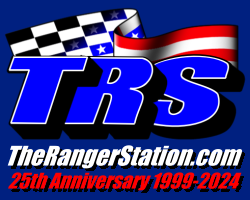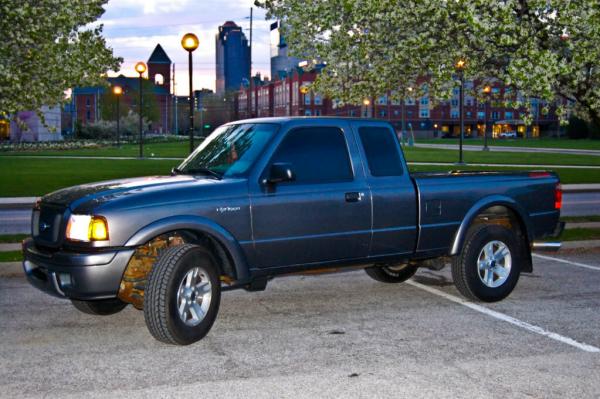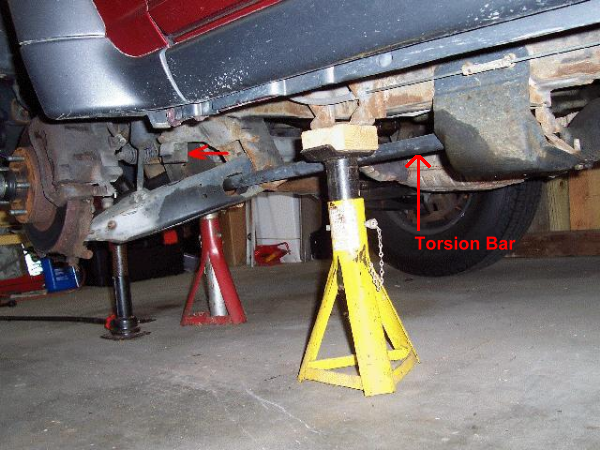The Ford Ranger came with two basic styles of front suspension depending on the year it was produced. The twin beam front suspension was used from 1983-1997, and an IFS (Independent Front Suspension) has been used from 1998 to the present day.
This page will break down the different suspensions based on year and whether the vehicle is 2WD or 4WD.
1983-1997 Ford Ranger 2WD Front Suspension:
Below is the TIB (Twin I-Beam) front suspension used in Ford Rangers from 1983-1997. In 1965 Ford introduced the Twin I-Beam front suspension in the Ford F-Series trucks. It was offered only on light-duty two-wheel-drive F-Series pickup trucks, giving them a softer ride and better handling characteristics. You’ll see or hear people refer to all the early Ranger suspensions as TTB, bit TTB stands for Twin Traction Beam and only applies to the 4WD (4×4) models.
The TIB front suspension is an independent front suspension in the sense that each side of the front suspension has its own axle beam, coil spring, and radius arm.

1983-1997 Ford Ranger 4WD Front Suspension:
Below is the TTB (Twin Traction Beam) front suspension used in the Ford Ranger from 1983-1997. It is similar in design to the TIB (Twin I-Beam) mentioned above except that the axle beams are larger, and the drivers side beam has a differential mounted to it.
The TTB came as either a Dana 28 or Dana 35. Both were reverse rotation differentials. Click HERE for more information on these axles.
The TTB front suspension is an independent front suspension in the sense that each side of the front vehicle has its own axle beam, coil spring, and radius arm.
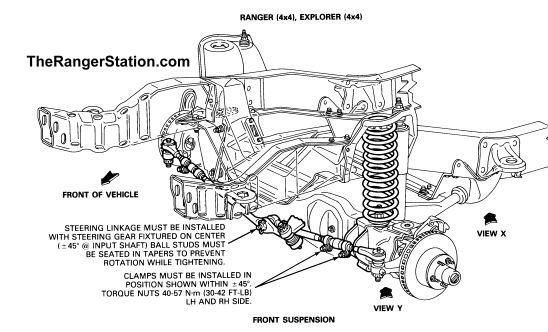
TIB and TTB Axle Beam Comparisons:
Below is a photo of a driver side TTB axle beam (with its differential) on the left, and a driver side TIB axle beam on the right.
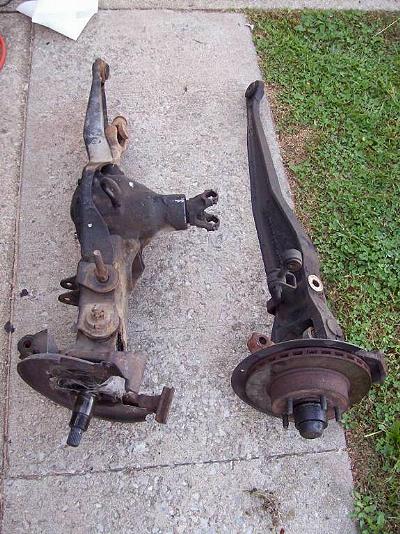
1998-2010 Ford Ranger 2WD Front Suspension:
The 1998-2010 2WD Ford Ranger came with an IFS coil spring front suspension. This suspension doesn’t use the old I-Beam setup. Instead it uses upper and lower arms with a coil spring mounted between them. These springs are not the same springs used on the older I-Beam (TIB) suspensions.
Ford Ranger 2WD Torsion Bar Front Suspension:
Not all 2WD Rangers built after 1998 came with a coil spring IFS front suspension.
(2005 Ford Ranger Edge 2WD owned by forum member hoosier1104)
The 2001-2005 Ford Ranger Edge and the 2006-2009 Ford Ranger Sport came with a torsion bar front suspension. Also, there was a 2000 Ford Ranger Trailhead 2WD that came with the torsion bar front suspension. Note that the truck pictured above in not a 4WD Ranger. It is a 2005 Ford Ranger Edge 2WD. You can see the torsion bar under the front (sticking out past the right center of the front tire and extending back to its mount near the front door).
The torsion bar suspension doesn’t have any coil springs between the front suspension arms. Instead it uses a torsion bar that is connected to the lower arm and runs parallel with the frame. It connects to the frame rail behind the front cab mount. See the section below on how torsion bar suspensions work.
1998-2010 Ford Ranger 4WD Front Suspension:
The 1998-2010 4WD Ford Ranger’s come with a torsion bar front suspension. This front suspension used a Dana 35 housing (Click HERE for more info), but it wasn’t the same as the Dana 35 found in the earlier TTB Rangers. The Dana 35 used from 1998 to the present is a standard rotation Dana 35. The earlier Dana 35’s were a reverse rotation differential.
The torsion bar suspension doesn’t have any coil springs between the front suspension arms. Instead it uses a torsion bar that is connected to the lower arm and runs parallel with the frame. It connects to the frame rail behind the front cab mount. See the section below on how torsion bar suspensions work.
2008-2011 Ford Ranger 4×4 Torsion Suspension Versus 1998-2007 Torsion Bar Suspension:
In 2008, ford clocked the keys a few degrees to lower the Ranger and give it better handling and MPG characteristics. If you get a set of factory torsion bar keys from a 2007 or older 4×4 Ranger, and install them in a 2008 or newer Ranger, it will lift that Ranger 1.75-2.00 inches in the front.
Also, the rear lift blocks in the 2008-2011 Ford Ranger are lower. You can lift a 2008-2011 4×4 Ranger a little bit simply by installing the earlier parts. If you add a Superlift suspension lift on a 2008 and newer Ranger, then the earlier keys will lift the front more. The Superlift already comes with taller rear blocks.
How The Torsion Bar Works:
This is a CAD illustration of a torsion bar front suspension (not from a Ranger). When the suspension compresses, the torsion bar is twisted clockwise by the lower A-arm. Because the torsion bar is anchored at the other end in the crossmember, the torsion bar exerts a counterclockwise force that pushes the A-arm back down. The effective spring rate of the bar is determined by its length, diameter and material.
Manufacturers change the torsion bar or key to adjust the ride height, usually to compensate for heavier or lighter engine packages. While the ride height may be adjusted by turning the adjuster bolts on the stock torsion key, rotating the stock keys too far can bend the adjusting bolt and place the shock piston outside the standard travel. Over-rotating the torsion bars can also cause the suspension to hit the bumpstop prematurely, causing a harsh ride. Aftermarket forged torsion key kits use reclocked adjuster keys to prevent over-rotation.
Thanks to forum members:
hoosier1104 (truck photo)
Ranger44 (torsion bar photo)
adsm08 (diagramatics)
Sasquatch_Ryda (diagramatics)
